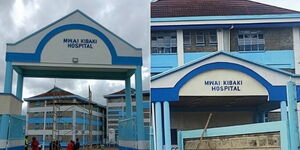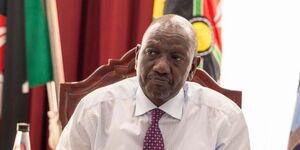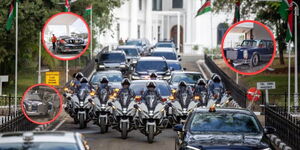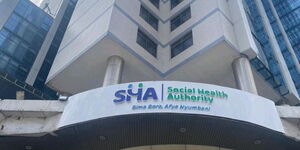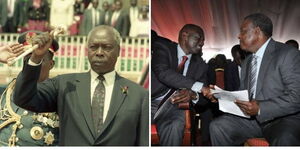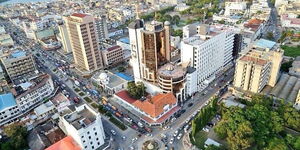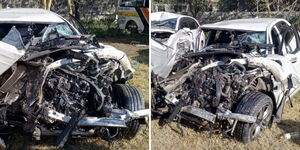Even before the dust settles over President William Ruto’s recent visit to the United States, the ramifications of the agreements made are beginning to surface.
One of the key outcomes is a mandate for trucks and buses to use the proposed Mombasa-Nairobi expressway, potentially driving up the cost of transportation for consumers.
The Mombasa-Nairobi corridor, a crucial artery for Kenya’s economy, sees over 2,000 trucks daily. Currently toll-free, these trucks are set to incur toll fees once the new expressway is operational, whether the drivers like it or not.
The expansion of this corridor has been a long-standing ambition of successive Kenyan governments, aimed at alleviating congestion.
The latest push came after a recent accord between Kenya National Highways Authority (KeNHA) and the U.S.-based infrastructure investment firm Everstrong Capital.
During an investor presentation, the consortium behind the Mombasa-Nairobi Expressway outlined six key government responsibilities within the Ksh477.9 billion public-private partnership (PPP).
Among these, the government has agreed to adjust toll fees in response to currency fluctuations, meaning fees could rise if the Kenyan shilling weakens.
The envisioned four-lane, 440-kilometre dual carriageway, dubbed the Usahihi Expressway, will be constructed by a consortium of U.S. companies led by Everstrong Capital.
This project, heralded as a competitor to the Chinese-built standard gauge railway (SGR) along the same route, aims to attract substantial international investment.
"The Government of Kenya has some important responsibilities: decommission existing roads for all trucks and buses," states a part of the consortium’s presentation.
This move is seen as essential to ensuring the new toll road’s viability.
The Kenya Ports Authority’s managing director highlighted the critical role of the Mombasa-Nairobi route, noting that 2,000 trucks collect cargo from the port daily.
However, with the new mandate, the cost of transporting goods and passengers is set to rise.
Passengers on buses currently pay between Ksh1,300 and Ksh1,500. With the enforced use of the toll road, these fares are expected to increase as transport companies adjust to cover the new expenses. Everstrong, the project’s lead sponsor, has yet to disclose the toll fees for the 30-year concession period.
The government’s agreement to allow toll rate adjustments for exchange rate risks further compounds potential cost increases. As seen with the Nairobi Expressway, toll fees can rise if the shilling depreciates.
This situation echoes a previous policy under former President Uhuru Kenyatta, which compelled importers to use the SGR. President Ruto reversed this directive, fulfilling a campaign promise to the coastal community by “bringing the port back to Mombasa.” Yet, the new expressway mandate could see buses and trucks losing their free route option, inevitably driving up transport costs.
The construction of the Usahihi Expressway is scheduled to commence in 2026, following the financial close in December 2024, with completion targeted for 2029.
The project, structured under the Availability-Based Service Payment Model, includes a government commitment to compensate the contractor for any traffic shortfalls, ensuring investor returns.
This arrangement is partly due to the absence of historical toll road performance data in Kenya, making traffic projections challenging. Although the project is a PPP, the government will bear the traffic risk to attract investors.
The expressway deal is one of several signed during President Ruto’s three-day state visit to the U.S. Local investors, including banks and pension funds, will contribute to the project’s financing, with a debt-to-equity ratio of 70 to 30 per cent.
The project’s history dates back to 2018, when Bechtel initially planned to construct the road. Disagreements over the financing model delayed the project, with Bechtel wanting government debt financing and the government preferring a PPP approach. Bechtel later returned, partnering with Everstrong and proposing a revised financing model.
With Kenya facing borrowing constraints, it increasingly relies on PPPs for major infrastructure developments, including roads and dams.
However, projects funded through foreign-denominated loans are vulnerable to exchange rate fluctuations, often resulting in increased costs for consumers.

